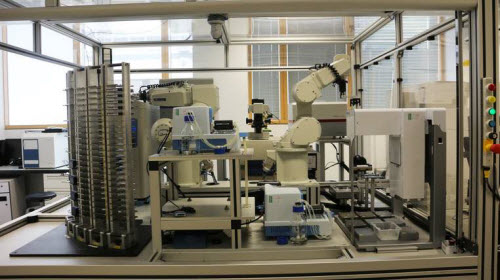A new robot just discovered that a mixture of elements that can fight cancer can also treat malaria. Will artificial intelligence be able to unearth life-saving drugs quicker and more inexpensively than humans can?
Each day, the robot scientist checks whether 10,000 chemicals are toxic to humans. One human can typically screen only 10 to 20 chemicals a year.
According to a co-author of the study that documented the usage of the robot scientist, Professor Steve Oliver from the University of Cambridge department of biochemistry, by doing this the robot, called Eve, can eliminate the use of toxic compounds in drug candidates and identify elements that can treat disease.
“This allows Eve to exclude compounds that are toxic to cells and select those that block the action of the parasite protein while leaving any equivalent human protein unscathed,” Professor Oliver said. “Eve exploits artificial intelligence to learn from early successes in her screens and select compounds that have a high probability of being active against a chosen drug target.”
Screening chemicals at such a dramatically increased rate allows labs to perform more tests, use space and equipment allocated for this purpose more efficiently, and hence discover drugs at a lower cost.
The study was able to discover drug candidates that can treat malaria and tropical diseases that haven’t been addressed.
“Neglected tropical diseases are a scourge of humanity, infecting hundreds of millions of people, and killing millions of people every year,” Professor Oliver said. “We know what causes these diseases and that we can, in theory, attack the parasites that cause them using small molecule drugs. But the cost and speed of drug discovery and the economic return make them unattractive to the pharmaceutical industry.
The study emphasizes that the same methodology employed to make these discoveries can easily be applied to discover drugs that can treat other diseases.
“Eve’s standardized assays could easily be engineered for other targets classes or target species (e.g. bacteria), for adjunctive targets (e.g. to drug import or efflux pumps) or for combinatory functions (e.g. to screen for drug synergies across multiple targets).”
